Jingjing Zhao
Pinching-Antenna Systems-Enabled Multi-User Communications: Transmission Structures and Beamforming Optimization
Aug 20, 2025Abstract:Pinching-antenna systems (PASS) represent an innovative advancement in flexible-antenna technologies, aimed at significantly improving wireless communications by ensuring reliable line-of-sight connections and dynamic antenna array reconfigurations. To employ multi-waveguide PASS in multi-user communications, three practical transmission structures are proposed, namely waveguide multiplexing (WM), waveguide division (WD), and waveguide switching (WS). Based on the proposed structures, the joint baseband signal processing and pinching beamforming design is studied for a general multi-group multicast communication system, with the unicast communication encompassed as a special case. A max-min fairness problem is formulated for each proposed transmission structure, subject to the maximum transmit power constraint. For WM, to solve the highly-coupled and non-convex MMF problem with complex exponential and fractional expressions, a penalty dual decomposition (PDD)-based algorithm is invoked for obtaining locally optimal solutions. Specifically, the augmented Lagrangian relaxation is first applied to alleviate the stringent coupling constraints, which is followed by the block decomposition over the resulting augmented Lagrangian function. Then, the proposed PDD-based algorithm is extended to solve the MMF problem for both WD and WS. Furthermore, a low-complexity algorithm is proposed for the unicast case employing the WS structure, by simultaneously aligning the signal phases and minimizing the large-scale path loss at each user. Finally, numerical results reveal that: 1) the MMF performance is significantly improved by employing the PASS compared to conventional fixed-position antenna systems; 2) WS and WM are suitable for unicast and multicast communications, respectively; 3) the performance gap between WD and WM can be significantly alleviated when the users are geographically isolated.
Multiple-Mode Affine Frequency Division Multiplexing with Index Modulation
Jul 17, 2025Abstract:Affine frequency division multiplexing (AFDM), a promising multicarrier technique utilizing chirp signals, has been envisioned as an effective solution for high-mobility communication scenarios. In this paper, we develop a multiple-mode index modulation scheme tailored for AFDM, termed as MM-AFDM-IM, which aims to further improve the spectral and energy efficiencies of AFDM. Specifically, multiple constellation alphabets are selected for different chirp-based subcarriers (chirps). Aside from classical amplitude/phase modulation, additional information bits can be conveyed by the dynamic patterns of both constellation mode selection and chirp activation, without extra energy consumption. Furthermore, we discuss the mode selection strategy and derive an asymptotically tight upper bound on the bit error rate (BER) of the proposed scheme under maximum-likelihood detection. Simulation results are provided to demonstrate the superior performance of MM-AFDM-IM compared to conventional benchmark schemes.
RIS-Assisted Beamfocusing in Near-Field IoT Communication Systems: A Transformer-Based Approach
Apr 17, 2025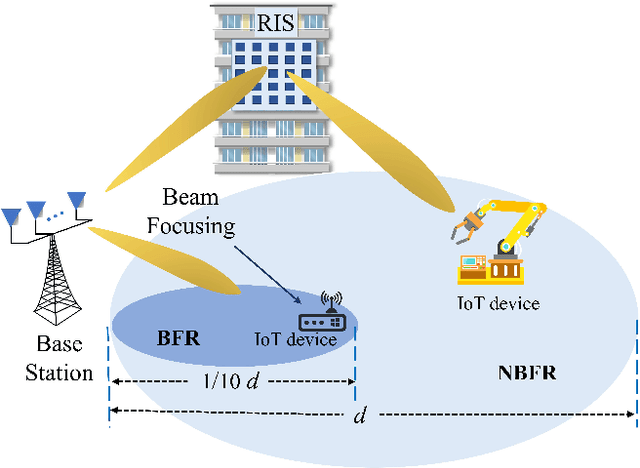
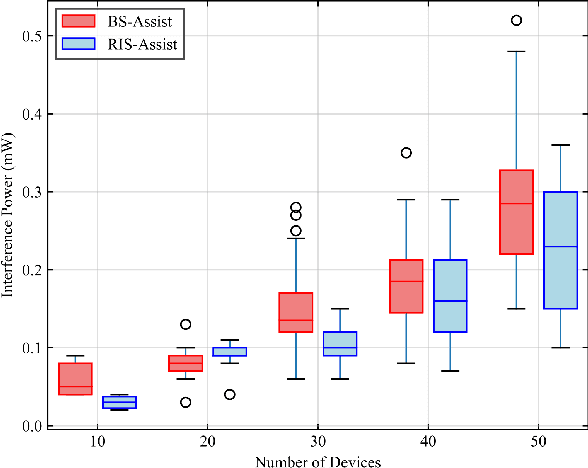
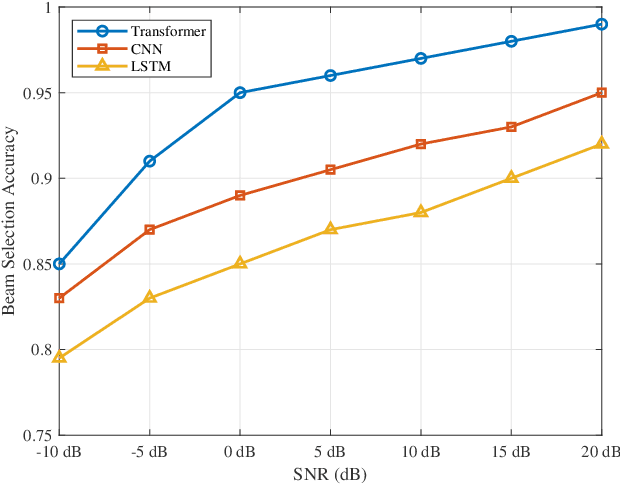
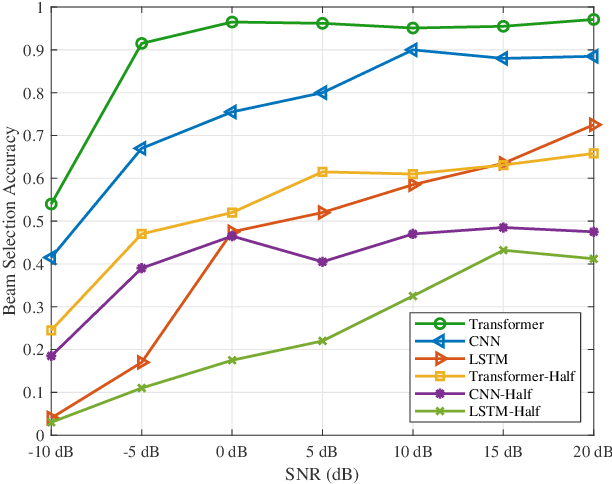
Abstract:The massive number of antennas in extremely large aperture array (ELAA) systems shifts the propagation regime of signals in internet of things (IoT) communication systems towards near-field spherical wave propagation. We propose a reconfigurable intelligent surfaces (RIS)-assisted beamfocusing mechanism, where the design of the two-dimensional beam codebook that contains both the angular and distance domains is challenging. To address this issue, we introduce a novel Transformer-based two-stage beam training algorithm, which includes the coarse and fine search phases. The proposed mechanism provides a fine-grained codebook with enhanced spatial resolution, enabling precise beamfocusing. Specifically, in the first stage, the beam training is performed to estimate the approximate location of the device by using a simple codebook, determining whether it is within the beamfocusing range (BFR) or the none-beamfocusing range (NBFR). In the second stage, by using a more precise codebook, a fine-grained beam search strategy is conducted. Experimental results unveil that the precision of the RIS-assisted beamfocusing is greatly improved. The proposed method achieves beam selection accuracy up to 97% at signal-to-noise ratio (SNR) of 20 dB, and improves 10% to 50% over the baseline method at different SNRs.
Continuous Aperture Array (CAPA)-Based Secure Wireless Communications
Apr 15, 2025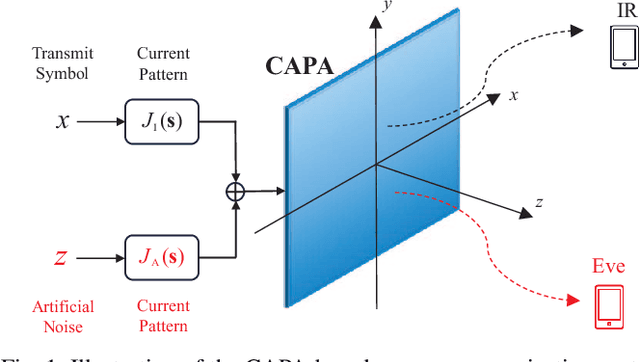
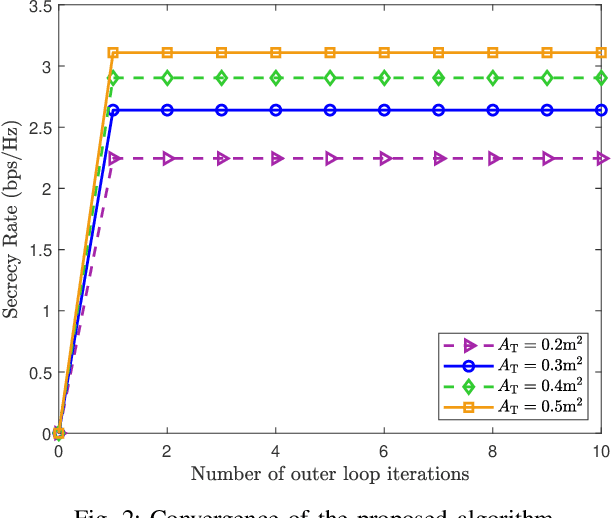
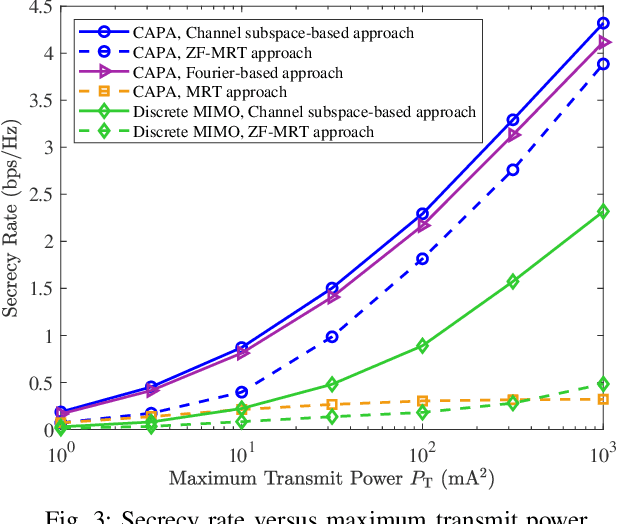
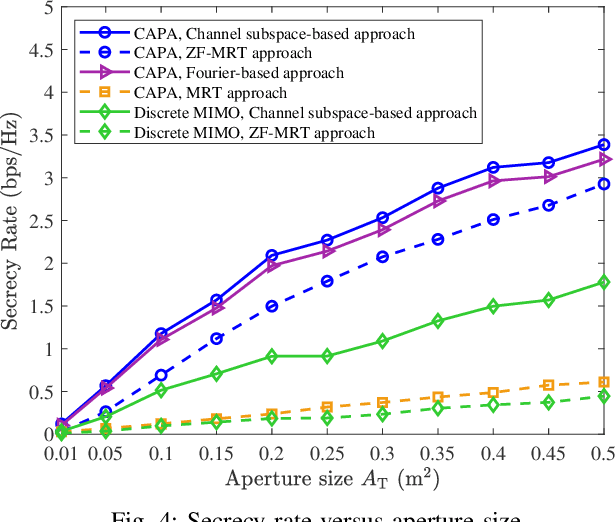
Abstract:A continuous aperture array (CAPA)-based secure communication system is investigated, where a base station equipped with a CAPA transmits signals to a legitimate user under the existence of an eavesdropper. For improving the secrecy performance, the artificial noise (AN) is employed at the BS for the jamming purpose. We aim at maximizing the secrecy rate by jointly optimizing the information-bearing and AN source current patterns, subject to the maximum transmit power constraint. To solve the resultant non-convex integral-based functional programming problem, a channel subspace-based approach is first proposed via exploiting the result that the optimal current patterns always lie within the subspace spanned by all users' channel responses. Then, the intractable CAPA continuous source current pattern design problem with an infinite number of optimization variables is equivalently transformed into the channel-subspace weighting factor optimization problem with a finite number of optimization variables. A penalty-based successive convex approximation method is developed for iteratively optimizing the finite-size weighting vectors. To further reduce the computational complexity, we propose a two-stage source current patterns design scheme. Specifically, the information-bearing and AN patterns are first designed using the maximal ration transmission and zero-forcing transmission, respectively. Then, the remaining power allocation is addressed via the one-dimensional search method. Numerical results unveil that 1) the CAPA brings in significant secrecy rate gain compared to the conventional discrete multiple-input multiple-output; 2) the proposed channel subspace-based algorithm outperforms the conventional Fourier-based approach, while sustaining much lower computational complexity; and 3) the two-stage ZF-MRT approach has negligible performance loss for the large transmit power regime.
Movable-Element RIS-Aided Wireless Communications: An Element-Wise Position Optimization Approach
Mar 19, 2025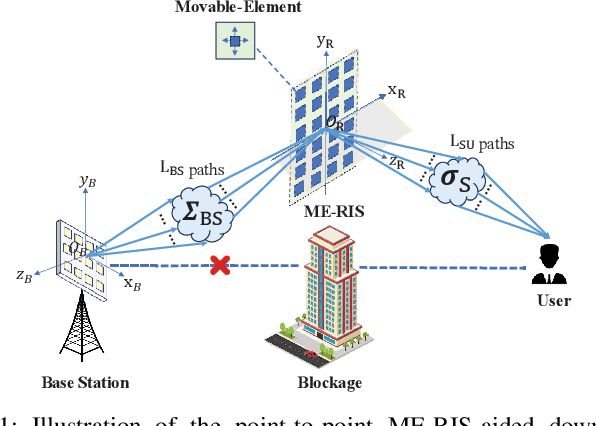
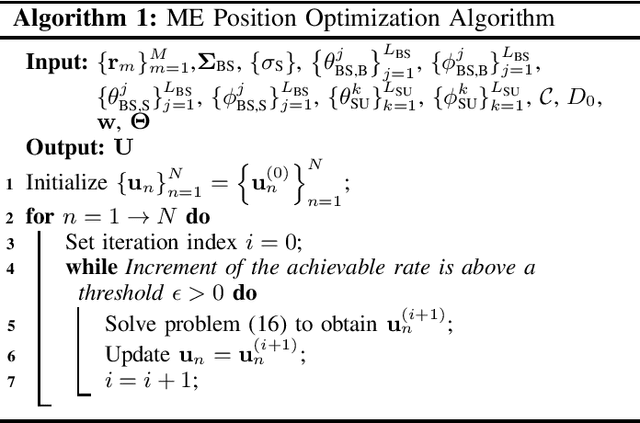

Abstract:A point-to-point movable element (ME) enabled reconfigurable intelligent surface (ME-RIS) communication system is investigated, where each element position can be flexibly adjusted to create favorable channel conditions. For maximizing the communication rate, an efficient ME position optimization approach is proposed. Specifically, by characterizing the cascaded channel power gain in an element-wise manner, the position of each ME is iteratively updated by invoking the successive convex approximation method. Numerical results unveil that 1) the proposed element-wise ME position optimization algorithm outperforms the gradient descent algorithm; and 2) the ME-RIS significantly improves the communication rate compared to the conventional RIS with fixed-position elements.
Waveguide Division Multiple Access for Pinching-Antenna Systems (PASS)
Feb 25, 2025
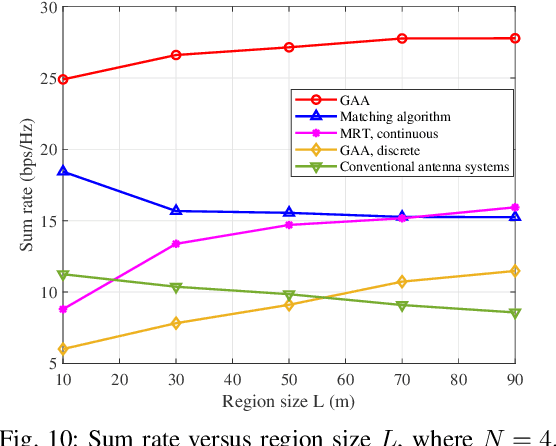
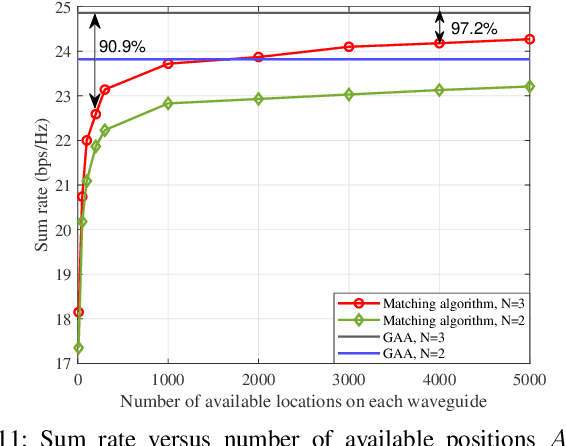
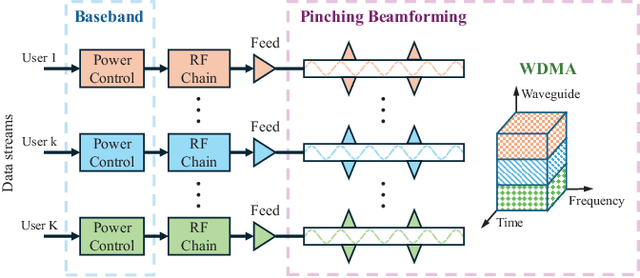
Abstract:A novel concept of waveguide division multiple access (WDMA) is proposed for multi-user pinching-antenna systems (PASS). The key principle of WDMA is to allocate each user with a dedicated waveguide, which is regarded as a new type of radio resources, so as to facilitate multi-user communications. By adjusting the activation positions of pinching antennas (PAs) over each waveguide, the pinching beamforming can be exploited for intended user signal enhancement and inter-user interference mitigation. Considering both ideal continuous and practical discrete PA position activation schemes, a joint power allocation and pinching beamforming optimization problem is formulated for the maximization of the sum rate. An alternating optimization-based algorithm is developed to address the formulated nonconvex problem. For solving the power allocation subproblem, the successive convex approximation method is invoked. For the pinching beamforming design subproblem, a penalty-based gradient ascent algorithm is first developed for the continuous PA activation case. Then, for the discrete PA activation case, a matching theory-based algorithm is proposed to achieve the near-optimal performance but with a low complexity. Numerical results unveil that: 1) For both continuous and discrete activation cases, PASS can achieve a significant performance gain over conventional fixed-position antenna systems; 2) the proposed WDMA can effectively underpin multi-user communications with the near orthogonality in free space achieved by the pinching beamforming; and 3) the performance gap between the discrete and continuous activation cases can be significantly alleviated with practically feasible numbers of PA candidate positions.
Aerial Active STAR-RIS-Aided IoT NOMA Networks
Jan 05, 2025



Abstract:A novel framework of the unmanned aerial vehicle (UAV)-mounted active simultaneously transmitting and reflecting reconfigurable intelligent surface (STAR-RIS) communications with the non-orthogonal multiple access (NOMA) is proposed for Internet-of-Things (IoT) networks. In particular, an active STAR-RIS is deployed onboard to enhance the communication link between the base station (BS) and the IoT devices, and NOMA is utilized for supporting the multi-device connectivity. Based on the proposed framework, a system sum rate maximization problem is formulated for the joint optimization of the active STAR-RIS beamforming, the UAV trajectory design, and the power allocation. To solve the non-convex problem with highly-coupled variables, an alternating optimization (AO) algorithm is proposed to decouple the original problem into three subproblems. Specifically, for the active STAR-RIS beamforming, the amplification coefficient, the power-splitting ratio, and the phase shift are incorporated into a combined variable to simplify the optimization process. Afterwards, the penalty-based method is invoked for handling the non-convex rank-one constraint. For the UAV trajectory design and the power allocation subproblems, the successive convex optimization method is applied for iteratively approximating the local-optimal solution. Numerical results demonstrate that: 1) the proposed algorithm achieves superior performance compared to the benchmarks in terms of the sum rate; and 2) the UAV-mounted active STAR-RIS can effectively enhance the channel gain from the BS to the IoT devices by the high-quality channel construction and the power compensation.
Exploiting Movable-Element STARS for Wireless Communications
Dec 28, 2024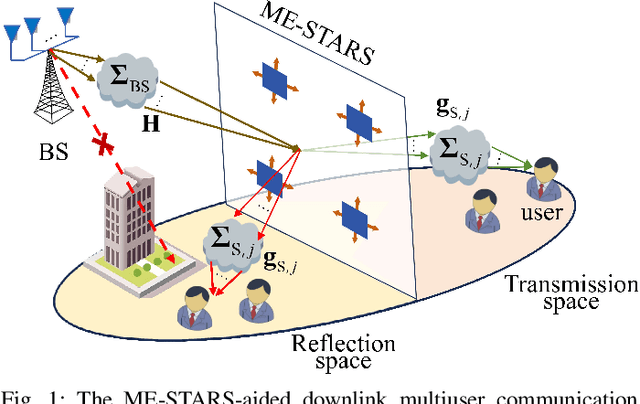
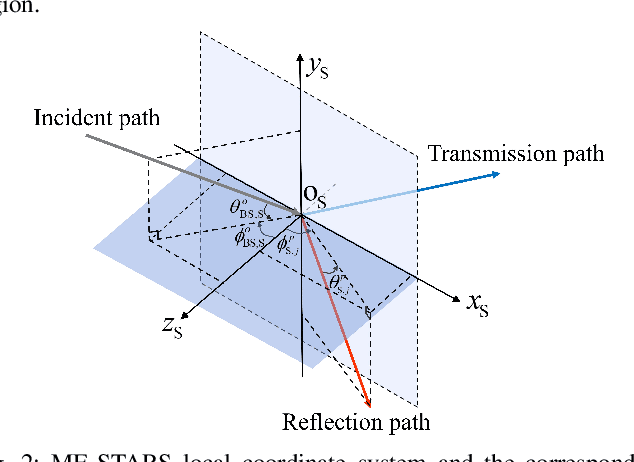
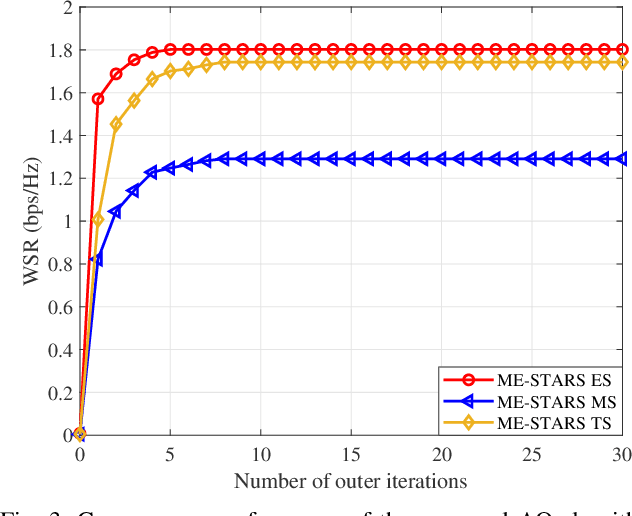
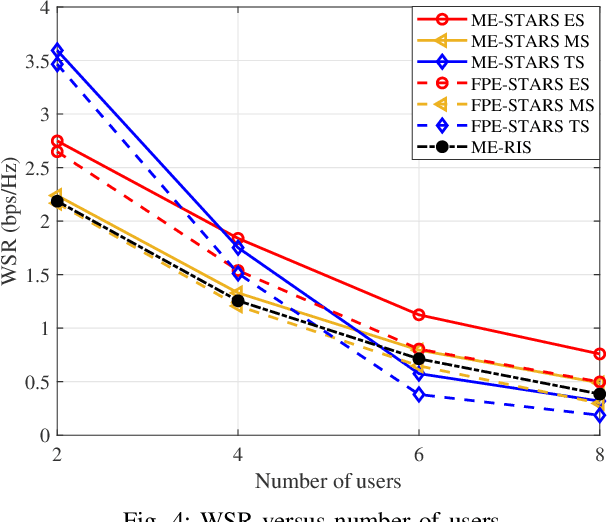
Abstract:A novel movable-element enabled simultaneously transmitting and reflecting surface (ME-STARS) communication system is proposed, where ME-STARS elements positions can be adjusted to enhance the degress-of-freedom for transmission and reflection. For each ME-STARS operating protocols, namely energy-splitting (ES), mode switching (MS), and time switching (TS), a weighted sum rate (WSR) maximization problem is formulated to jointly optimize the active beamforming at the base station (BS) as well as the elements positions and passive beamforming at the ME-STARS. An alternative optimization (AO)-based iterative algorithm is developed to decompose the original non-convex problem into three subproblems. Specifically, the gradient descent algorithm is employed for solving the ME-STARS element position optimization subproblem, and the weighted minimum mean square error and the successive convex approximation methods are invoked for solving the active and passive beamforming subproblems, respectively. It is further demonstrated that the proposed AO algorithm for ES can be extended to solve the problems for MS and TS. Numerical results unveil that: 1) the ME-STARS can significantly improve the WSR compared to the STARS with fixed position elements and the conventional reconfigurable intelligent surface with movable elements, thanks to the extra spatial-domain diversity and the higher flexibility in beamforming; and 2) the performance gain of ME-STARS is significant in the scenarios with larger number of users or more scatterers.
Interference-Robust Broadband Rapidly-Varying MIMO Communications: A Knowledge-Data Dual Driven Framework
Dec 26, 2024Abstract:A novel time-efficient framework is proposed for improving the robustness of a broadband multiple-input multiple-output (MIMO) system against unknown interference under rapidly-varying channels. A mean-squared error (MSE) minimization problem is formulated by optimizing the beamformers employed. Since the unknown interference statistics are the premise for solving the formulated problem, an interference statistics tracking (IST) module is first designed. The IST module exploits both the time- and spatial-domain correlations of the interference-plus-noise (IPN) covariance for the future predictions with data training. Compared to the conventional signal-free space sampling approach, the IST module can realize zero-pilot and low-latency estimation. Subsequently, an interference-resistant hybrid beamforming (IR-HBF) module is presented, which incorporates both the prior knowledge of the theoretical optimization method as well as the data-fed training. Taking advantage of the interpretable network structure, the IR-HBF module enables the simplified mapping from the interference statistics to the beamforming weights. The simulations are executed in high-mobility scenarios, where the numerical results unveil that: 1) the proposed IST module attains promising prediction accuracy compared to the conventional counterparts under different snapshot sampling errors; and 2) the proposed IR-HBF module achieves lower MSE with significantly reduced computational complexity.
PET-SQL: A Prompt-enhanced Two-stage Text-to-SQL Framework with Cross-consistency
Mar 18, 2024



Abstract:Recent advancements in Text-to-SQL (Text2SQL) emphasize stimulating the large language models (LLM) on in-context learning, achieving significant results. Nevertheless, they face challenges when dealing with verbose database information and complex user intentions. This paper presents a two-stage framework to enhance the performance of current LLM-based natural language to SQL systems. We first introduce a novel prompt representation, called reference-enhanced representation, which includes schema information and randomly sampled cell values from tables to instruct LLMs in generating SQL queries. Then, in the first stage, question-SQL pairs are retrieved as few-shot demonstrations, prompting the LLM to generate a preliminary SQL (PreSQL). After that, the mentioned entities in PreSQL are parsed to conduct schema linking, which can significantly compact the useful information. In the second stage, with the linked schema, we simplify the prompt's schema information and instruct the LLM to produce the final SQL. Finally, as the post-refinement module, we propose using cross-consistency across different LLMs rather than self-consistency within a particular LLM. Our methods achieve new SOTA results on the Spider benchmark, with an execution accuracy of 87.6%.
 Add to Chrome
Add to Chrome Add to Firefox
Add to Firefox Add to Edge
Add to Edge